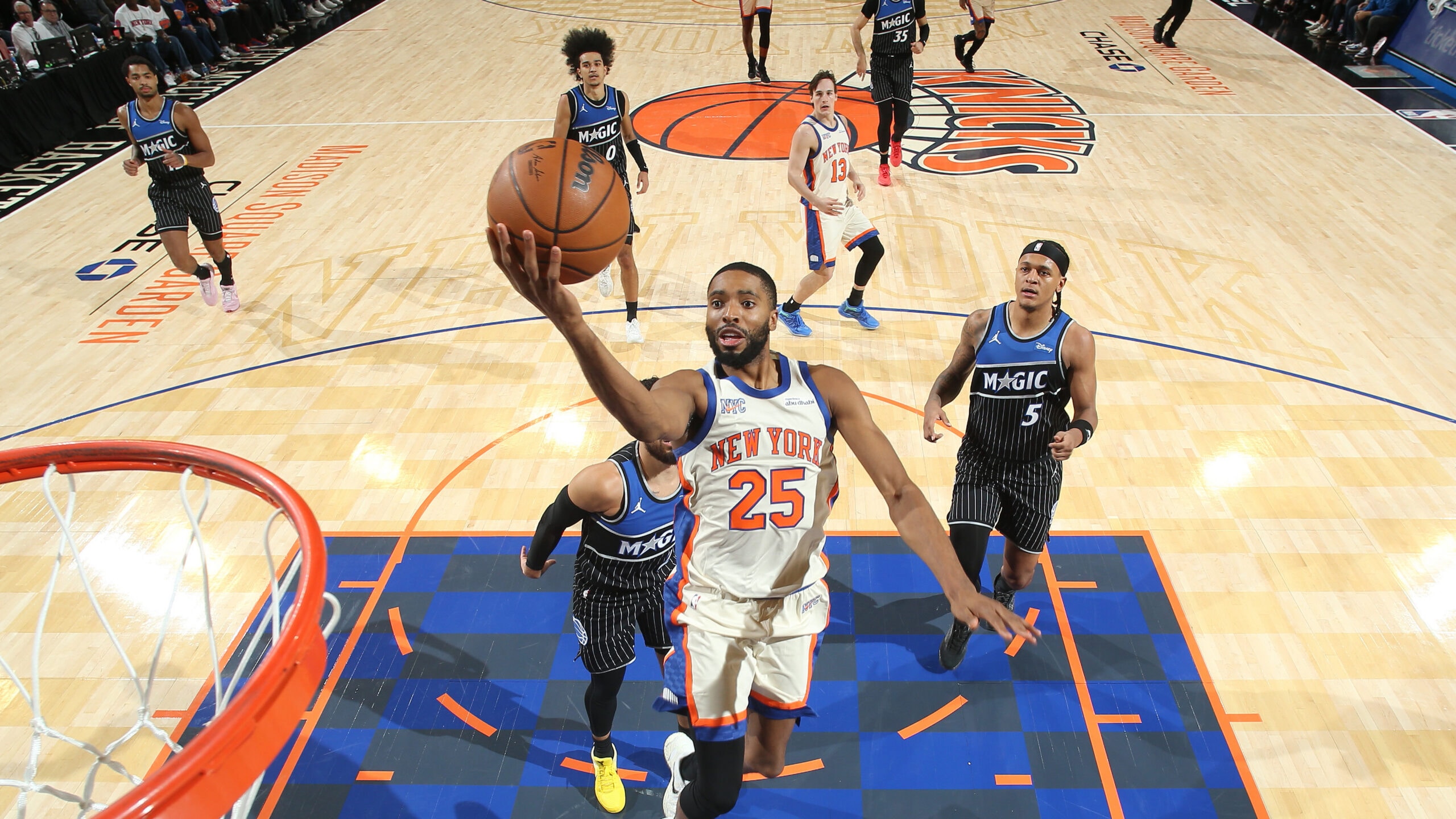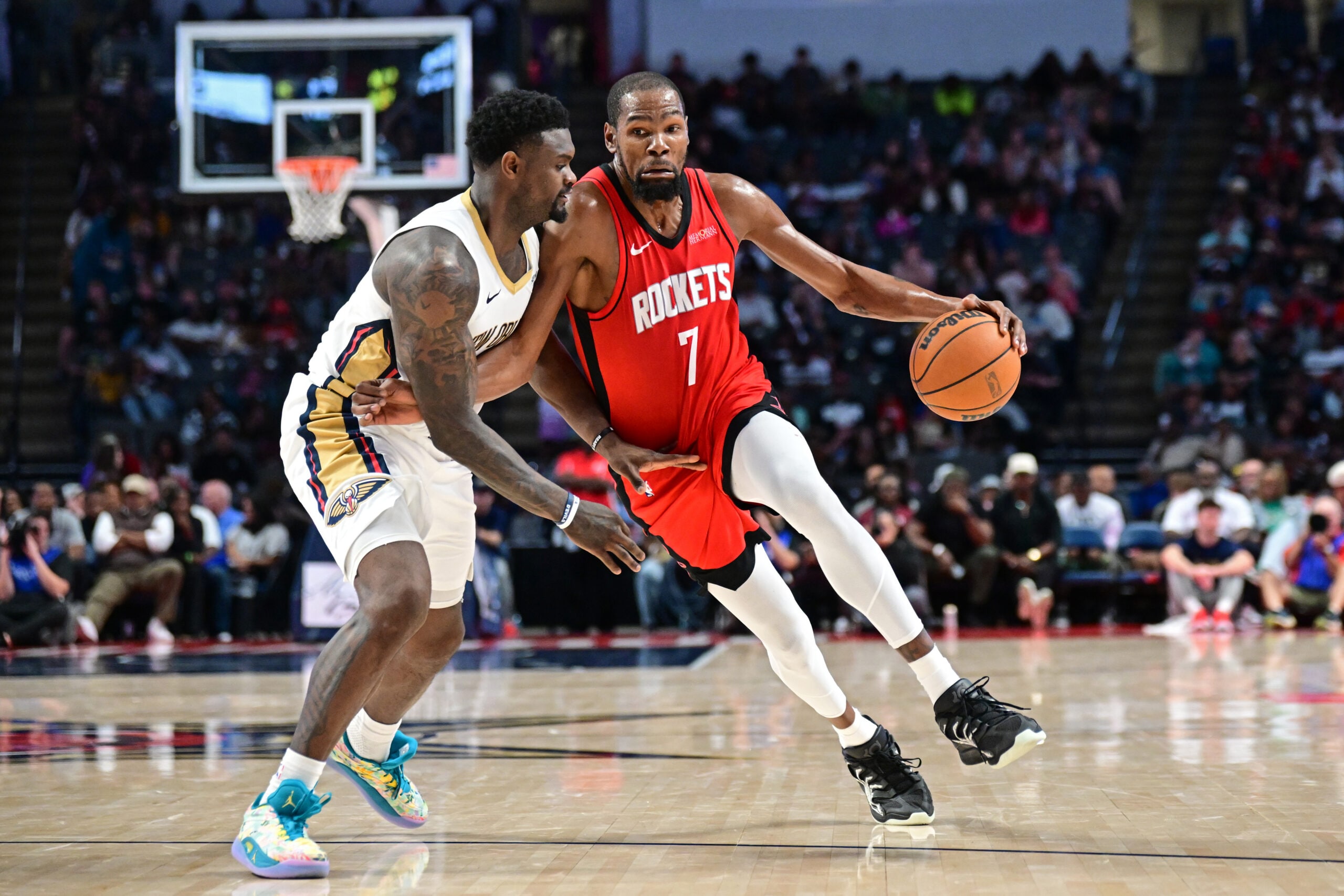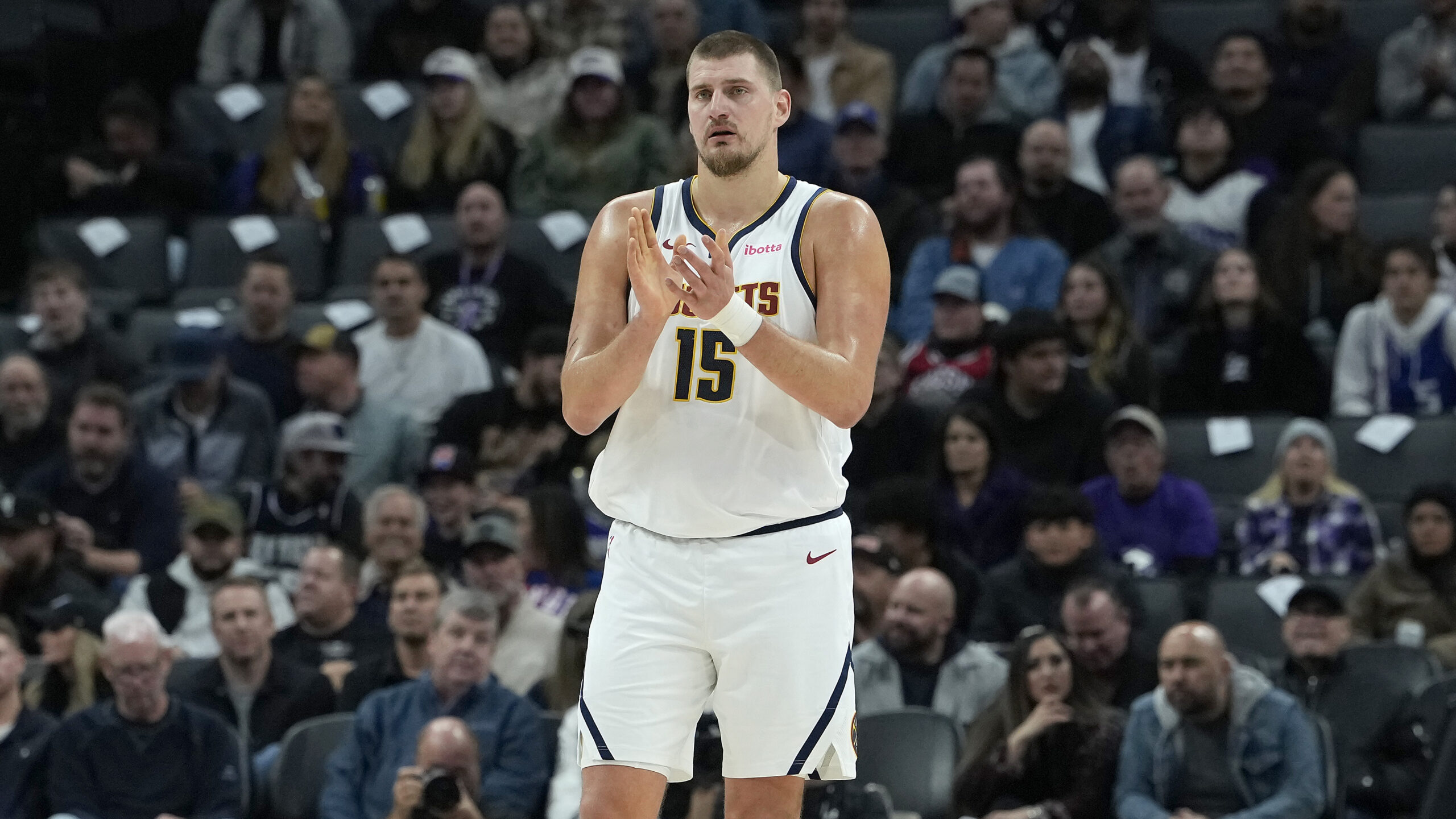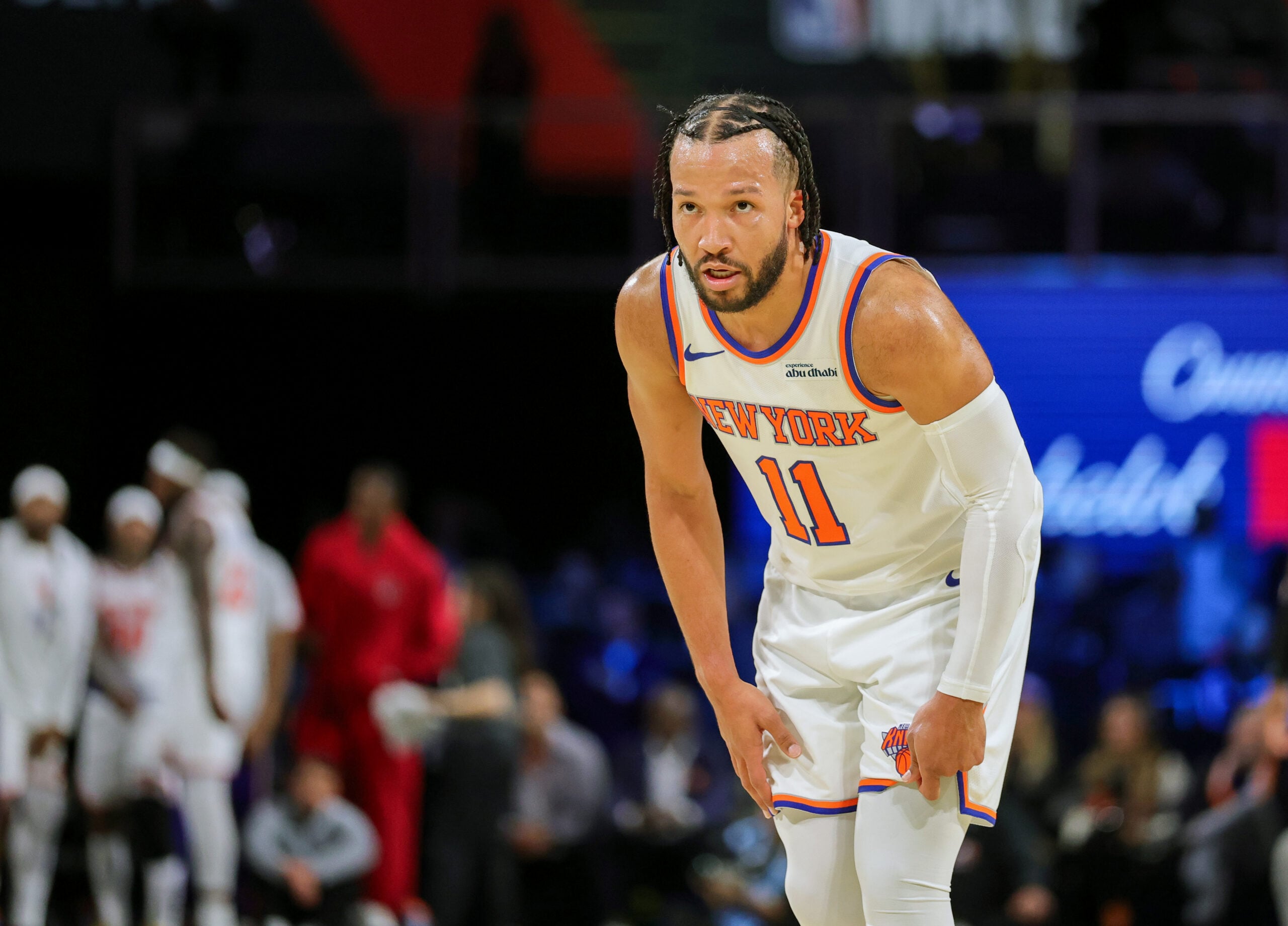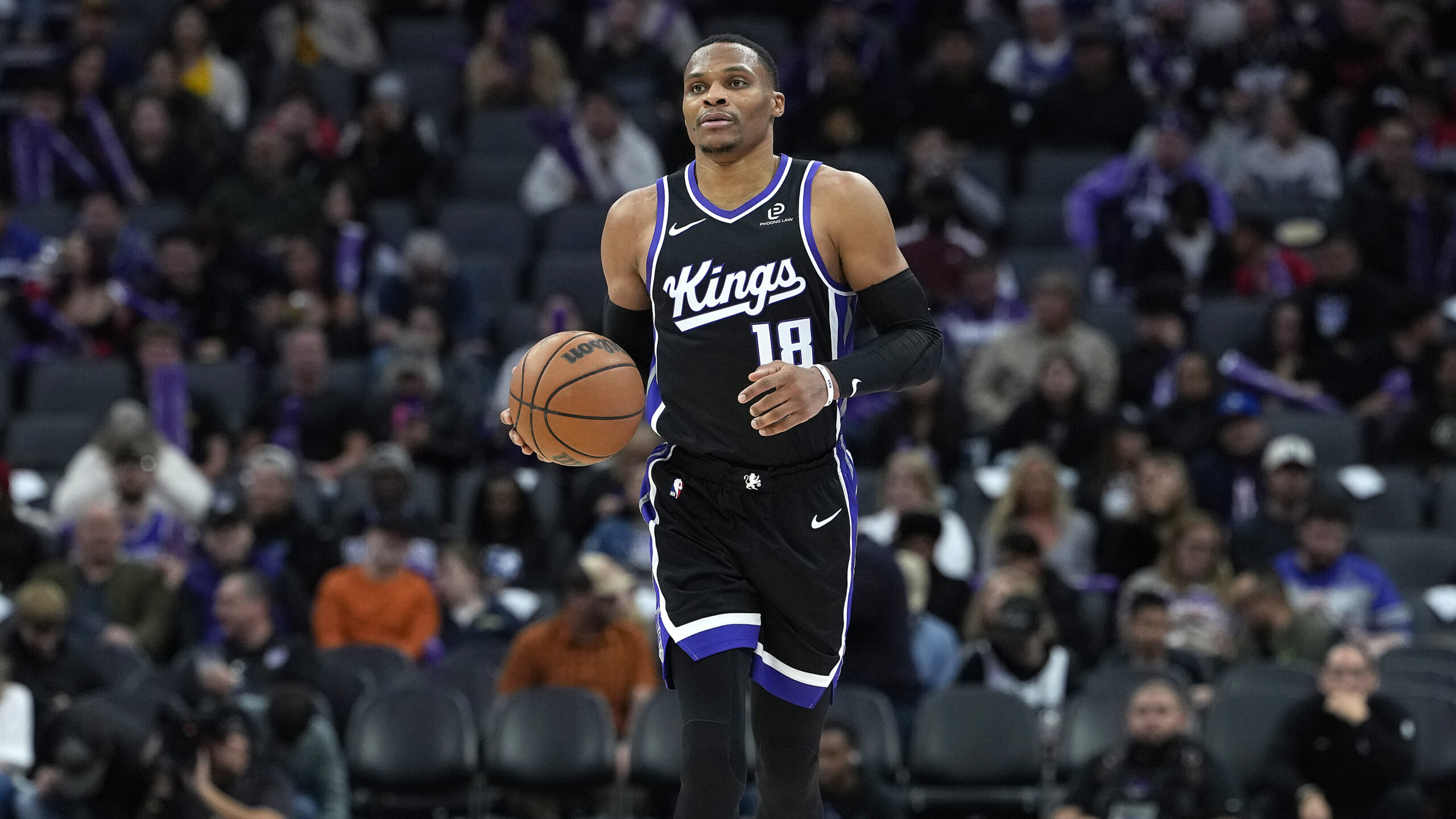Game Recap: Suns 117, Jazz 113
Phoenix showed off its improved defense in an overtime win against Utah on Wednesday.
Each week during the season, NBA.com writer John Schuhmann surveys the league to compile stats and notes for his in-depth Power Rankings. Before the next rankings drop on Monday, here are some of the storylines he’s keeping an eye on this weekend.
1. Suns put in work to slow down Jazz
When it comes to NBA defense, there’s the scheme and there’s the energy and communication within the scheme. These days, a lot of teams have the same basic principles defensively, hoping to force mid-range shots by having the ball-handler’s defender go over the screen and the screener’s defender drop back into the paint.
But some on-ball defenders work harder than others to get over the screen. And some bigs are more active and engaged than others in their drop coverage. The level of effort and activity within the scheme can make all the difference.
In their 117-113, overtime victory against the Utah Jazz on Wednesday, the Phoenix Suns showed why they’re one of the best defensive teams in the league. Here are some examples of the work the Suns put in on Wednesday:
1. Get dirty
An early example of awareness and sacrifice came from Devin Booker on the Jazz’s fourth possession of the game. Donovan Mitchell beat Chris Paul off the dribble. Deandre Ayton rotated over to contest Mitchell’s floater and Devin Booker rotated down to box out Rudy Gobert.

It seems simple, but there are countless examples of where that next guy will rotate down without making the full effort to dislodge the opposing big man and keep him off the glass. Cam Johnson made a similar effort early in the second quarter.
2. Nothing easy
Bojan Bogdanovic ended a nine-possession drought for the Jazz with a turnaround jumper over Booker midway through the first quarter, but the effort from Booker (pushing Bogdanovic away from the basket) and Mikal Bridges (pressuring the ball) to make the initial catch difficult was notable …

3. Help and recover
Ayton’s defensive mobility has been and will continue to be under the microscope. Early in the third quarter, Booker was able to get over Gobert’s initial screen for Mitchell, but got hit by the second one. Ayton was able to stifle the drive and then recover back to Gobert’s roll, getting some help from Jae Crowder, who forced a jump ball …

On the next possession, Ayton stayed in front of a Mike Conley dribble-handoff drive, didn’t bite for an Ingles-esque pass fake, and blocked Conley’s shot.
4. Forced to switch
For the most part, the Suns do not want Ayton switching screens and being put on an island against an opposing guard. According to Synergy play-type tracking, Ayton has defended 121 isolation possessions, 36 more than any other player in the league. And the 1.08 points per possession he’s allowed on those ranks 26th among 31 players who’ve defended at least 50. There have been multiple occasions this season where he’s been burned badly trying to defend guards or wings one-on-one late in games, and there was another in overtime on Wednesday.
Instead of challenging Ayton at the rim, Conley dragged him back out to the perimeter and then drove right past him …

Another downside of an Ayton switch is that it takes the Suns’ rim protection away from the rim and can create a mismatch inside. Late in the third quarter, the Jazz got an open corner 3-pointer when Booker got caught in a screen, Ayton was forced to switch onto Conley, and Torrey Craig sunk in the paint to help Booker with Gobert …

Midway through the fourth, Ayton switched a screen for Mitchell, but Paul didn’t like that matchup (he has a Synergy account), so he scrambled back to the ball, leaving the Suns vulnerable behind the double-team …

Paul’s high hands on the double-team forced an imprecise pass from Mitchell. Joe Ingles didn’t want to shoot the seemingly open corner 3-pointer off the low catch, but Bogdanovic hit another tough shot over Booker.
Despite the isolation issues, the Suns have been riding with Ayton down the stretch of close games. Phoenix has played 126 total clutch minutes this season (second most in the league) and while Paul leads individuals with 115 clutch minutes played, Ayton is right behind him at 114.
When it comes to late-game defense, other teams will sacrifice some rim protection for added foot speed and the ability to switch all screens. The Suns don’t really have a switch-everything lineup they can turn to. While Dario Saric is a “small-ball five,” that’s more about his offensive skill than his defensive mobility.
The Suns’ execution down the stretch on Wednesday was a little better on offense (24 points on 19 clutch possessions) than defense (where the Jazz scored 20 on 17). But overall, the Suns have now accounted two of the Jazz’s five least efficient games of the season, having held them to just 101 points per 100 possessions (Utah’s lowest mark vs. any opponent) over two meetings. With the Suns now just a game behind the Jazz in the loss column for the top seed in the Western Conference, they’ll meet again in Phoenix on April 30.
The Jazz remain the only team in the top five in both offensive and defensive efficiency, but the Suns aren’t far behind, ranking seventh and fifth. And it’s on defense where they’ve bigger improvement from last season. With the league average having seen a jump of 1.3 points per 100 possessions, only the Knicks (-4.8), Cavs (-2.8) and Warriors (-2.5) have seen a bigger drop in points allowed per 100 than the Suns (-2.4), who are set to rank in the top 10 defensively for the first time in 20 years (since 2000-01). In the three seasons prior to coach Monty Williams’ arrival in Phoenix, the Suns ranked 28th, 30th and 29th on defense, so this has been quite the two-year turnaround.
2. The methodical Kawhi Leonard
The next challenge for Ayton and the Suns is the most efficient pick-and-roll scorer in the league, with the Suns in L.A. on Thursday, where they’ll face the Clippers for the second half of their measuring-stick, national-TV back-to-back.
- Tonight on TNT: Suns vs. Clippers (10 ET)
Last season, Damian Lillard scored 1.15 points per possession on pick-and-roll ball-handler possessions, according to Synergy play-type tracking. It was the highest mark for any player who averaged at least five ball-handler possessions in the 16 years of Synergy tracking.
This season, that mark is being topped, not by Lillard or one of the other guards who liberally launch long 3-pointers off the dribble, but by Kawhi Leonard. The Clippers’ star has scored 1.16 points per possession as a pick-and-roll ball-handler, despite making fewer than one pull-up 3 per game. While teammate Paul George has been one of the league’s best pull-up 3-point shooters this season, Leonard’s 30-for-94 (32%) on pull-up 3-pointers ranks just 47th among 62 players who’ve attempted at least 75.
Leonard does most of his work inside the arc, and while he’ll occasionally turn the corner with some burst …

… his attack is usually more deliberate, slow and strong.

Leonard’s favorite spot on the floor is basically the same as that of Chris Paul, just inside the right elbow (2022 All-Star weekend should feature a shooting contest from that spot between the two of them, with a Lopez twin contesting from three feet away) …

But he has been getting all the way to the basket more of late. With the departure of Montrezl Harrell, the Clippers have seen a big drop in the percentage of their shots that have come from the restricted area. Leonard had seen a drop himself, but after taking only 18% of his shots in the restricted area through his first 31 games, he’s taken 29% of his shots there over his last 12. And again, it’s not really about speed …

While Leonard has been an efficient ball-handler, he hasn’t been a high-usage one. His 6.0 ball-handler possessions per game are down from 8.4 last season and rank just 37th in the league, right behind Elfrid Payton (0.86 points per possession). The Clippers have been setting more ball screens for Leonard since the All-Star break (23.8 per game) than they were prior (19.0), but for comparison, the Blazers have set more than 45 ball screens per game for Lillard.
The Clippers’ stretch where they’re playing six of seven games against the nine best teams in the league concludes with their game against the Suns on Thursday. They’re 4-2 over that stretch so far, though one of the two losses came in the game (vs. Orlando) that wasn’t against one of the good teams.
After hosting the Suns, the Clippers still have two more games on their nine-game homestand, facing the Rockets on Friday and the Pistons on Sunday.
3. New coach, very new scheme
An easy way to see which defenses are most or least aggressive in defending pick-and-rolls is by the percentage of their defensive possessions that are ball-handler possessions. A more aggressive defense has a lower percentage, because opposing ball-handlers are more likely to give up the ball. A defense that employs a soft “drop” coverage typically has a higher percentage, with opposing ball-handlers more likely to step into an uncontested jumper.
Last season, under then-coach Jim Boylen, only 12.3% of Bulls’ opponent possessions were pick-and-roll ball-handler possessions. That was the league’s lowest rate. Playing pick-and-rolls aggressively, the Bulls led the league (by a healthy margin) in opponent turnover rate, but also in the percentage of their opponents’ shots that came in the restricted area. It was a feast-or-famine defense in that way.
This season, under new coach Billy Donovan, the Bulls are at the other end of the list. In 2020-21, 22.9% of their opponents’ possessions — the league’s highest rate — pick-and-roll ball-handler possessions. Here’s Nikola Vucevic dropping back as Kyrie Irving steps into a comfortable foul-line jumper …

After the Bulls, the teams with the highest percentages (teams whose bigs hang back in the paint) are Utah, Oklahoma City, the Clippers and Milwaukee.
The team where the Bulls were last year is the Charlotte Hornets, with only 10.6% of Charlotte opponent possessions having been pick-and-roll ball-handler possessions. That’s actually the lowest percentage of the last seven seasons (since the Heat’s 9.5% in LeBron James’ last season in Miami).
There are two reasons for the historically low mark. One, the Hornets have defended the fewest ball screens per 100 possessions, according to Second Spectrum tracking. That’s in part because they’ve played a lot more zone than any other team (13.7% of their defensive possessions, according to Synergy). Secondly, the Hornets have switched 38% of ball screens, the league’s highest rate, according to Second Spectrum.
After Charlotte, the teams with the lowest rates are Miami (Bam Adebayo liberally switches ball screens), Toronto, Denver and Indiana.
4. Rolling into the zone
The Hornets aren’t the only team playing more zone this season. This is the third straight season in which there’s been an increase in zone defense league-wide. There are a few teams that will play zone for multiple possessions in a row, and more that will mostly use it when the opponent is taking the ball out of bounds as a way to throw a wrench in whatever play the offense is trying to run. (We dug deep into zone defense and offense a year ago, with some coaches saying they want their team to run the play anyway.)
That was the case in the fourth quarter in Boston on Tuesday, when the Sixers were inbounding the ball on the side. When the Celtics went to a 2-3 zone, the Sixers might not have recognized it, so they ran their play, and it turned out to work really well …

When Tobias Harris and Joel Embiid set a staggered screen for Seth Curry, Jayson Tatum had to slide over from the left side of the floor to pick up the ball. With Danny Green left alone on the left wing, Semi Ojeleye rotated up from the left baseline position, leaving Ben Simmons in the “dunker spot”. Luke Kornet (middle baseline) slid over to cover Simmons and the middle of the paint was open for Embiid to roll into.
If the Celtics were given another chance to defend the same play, they’d probably have Jaylen Brown rotate into the middle of the paint to deny the pass to Embiid, so that the only uncovered Sixer was Harris, a long pass away from Green.
5. Scram!
After the Hornets, the team with the highest switch rate on ball screens is the Brooklyn Nets. As noted above, one negative to switching is the mismatches it can create, both inside and out. The Nets don’t seem to mind if James Harden gets switched onto a big. Once again, Harden has good points-per-possession numbers when defending post-ups.
But the Nets don’t want Kyrie Irving defending the post (or having to box out an opposing center), so they’ll often execute a “scram” switch, where, after a switch out high, a third defender will come rescue Irving from an interior mismatch and send him elsewhere.
There were two back-to-back examples of this in the Nets’ blowout win over New Orleans on Wednesday. On the first, Jeff Green switched a high screen, leaving Irving to guard Willy Hernangomez. But before Hernangomez could get into the paint, Kevin Durant slid off of James Johnson to scram Irving. Irving was a little slow to rotate to Johnson, but the Pels’ forward had no interest in shooting an open 3-pointer and, when he drove, Irving poked the ball away …

On the next possession, Lonzo Ball set a ball-screen for Zion Williamson. Irving didn’t switch that, instead hedging the screen to allow Green to get back to Williamson …

Green stayed in front of Williamson, who gave the ball back to Ball and set a screen himself, getting the Pelicans the switch they wanted. But as Williamson rolled into post-up position, Nicolas Claxton scrammed Irving out of that matchup. Durant rotated down to Jaxson Hayes and Irving rotated out to Johnson. He was slow getting there again, but Johnson missed an open 3-pointer …

With the Nets’ switching scheme, opponents will continue to look for matchups they can take advantage of. Irving guarding somebody big is one of those matchups and the Nets are well aware of that. Their ability to “scram” him off those matchups and his quickness in finding the abandoned opponent will be something to keep an eye on.
* * *
John Schuhmann is a senior stats analyst for NBA.com. You can e-mail him here, find his archive here and follow him on Twitter.
The views on this page do not necessarily reflect the views of the NBA, its clubs or Turner Broadcasting.





